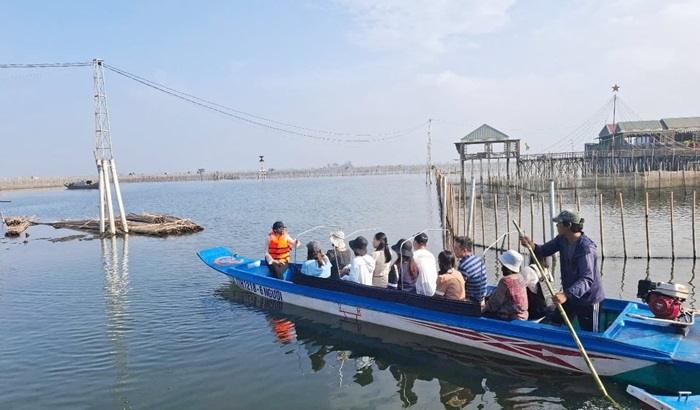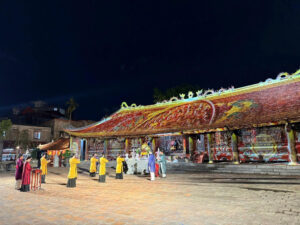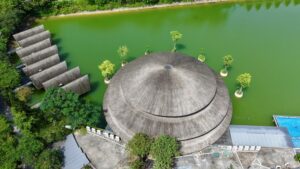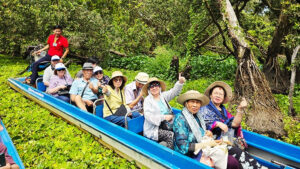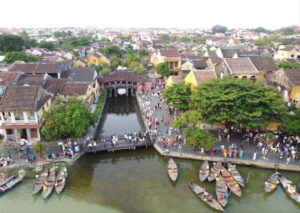The Nung, the second biggest ethnic minority group in Si Ma Cai district of Lao Cai province, live in earthen houses, which are not only a shelter but also a place that maintain many traditions and customs.
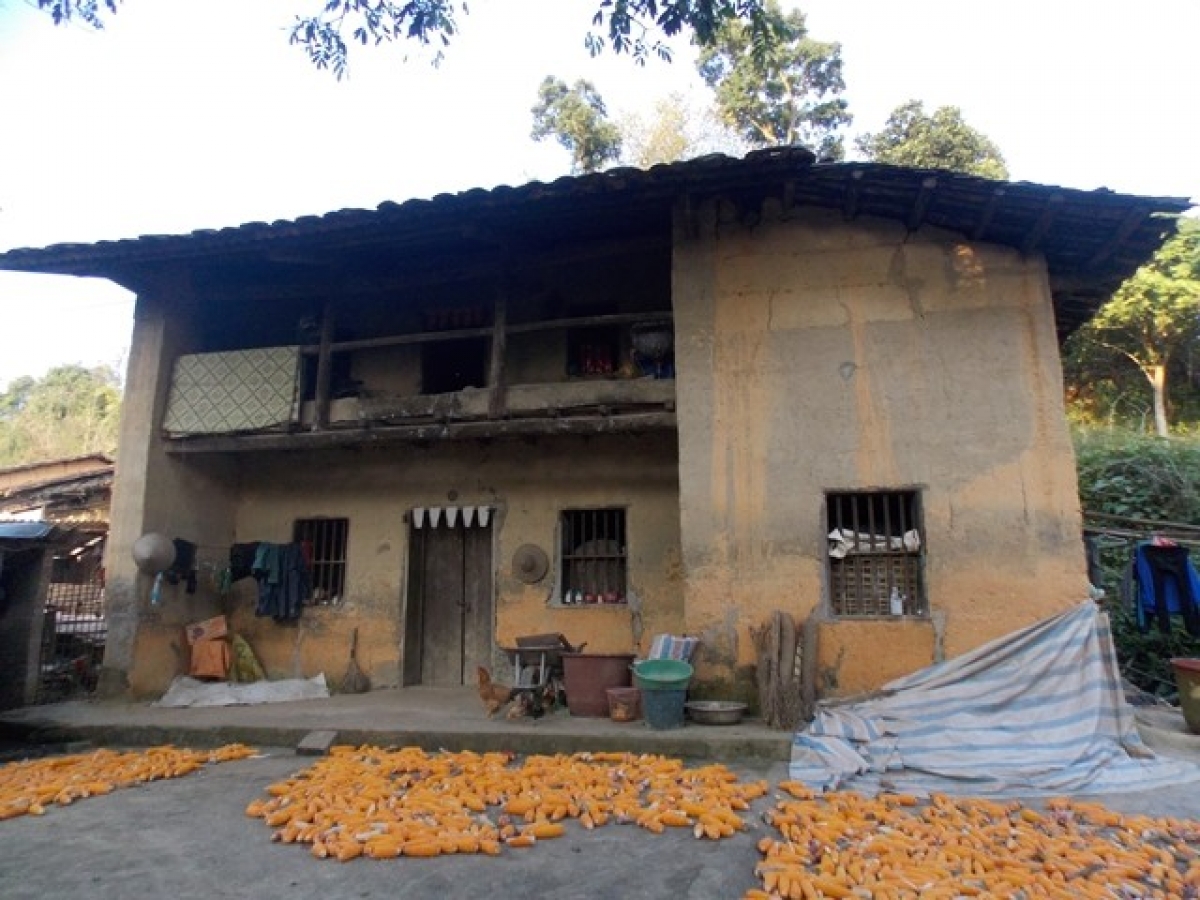
An earthen house of the Nung (photo: langvietonline.vn)
From the center of Si Ma Cai district, tourists travel about 3 km to Nan San commune to contemplate the picturesque scenes of terraced fields in a lush valley and the ancient earthen houses of the Nung people, which have stood for several dozen years to a hundred years.
Then Xuan Van, a local, says that before building a new house, the Nung people must choose a place that support production and living conditions.
“According to the Nung’s custom, the direction of the main door must suit the age of the house’s owner. We choose an appropriate day and hour to break the ground. At a chosen time, we put a mould used to make earthen walls on the land and butcher a chicken and a pig to inform the land spirits of our construction. I say: ‘Today is a good day. My surname is Then. I will break the ground to build a house. I pray the land spirits to protect and bless us, to live in the new house having a lot of money, no sickness, no disease, and no incident,” Van confides.
After the ritual, the house owner prepares the chicken and boils it. They hold another ritual with the well-done chicken, three bowls of rice, 3 cups of liquor, votive papers and incense. Then the house’s owner or a shaman will look at the chicken’s legs to foretell the good or bad omens in order to proceed with the construction or not. The Nung compress the earth in a wood mold of 2 meters long and 30 cm wide, according to Then Xuan Van.
“We mix red soil and sand to build walls, which are firm and durable.Other kind of soil can't be used to build high walls. We use a plumb to ensure the wall’s verticality. Completed walls are often 3.5m to 3.8m high,” says Van.
After taking the mould off of the compressed earthen walls, the Nung use wooden planks to smooth the sides.
“We must work quickly before the blended earth gets dry. When we remove the mold, we use wooden planks to beat the wall and smooth two sides to correct pock-marks,” explains Van.
While some people build the earthen walls, others make wood pillars, beams and flooring.
“After compacting the walls, we wait for another good day to build the pillars, beams and roof. A plain house has 4 rows of pillars. Each row has 4 pillars. Before installing the pillars, we hold a ritual at the break of dawn. A carpenter uses a wood log to hit another wood log. When all people come to help build the house, they erect the main pillar. Then they cover it with a red cloth. The house’s owner prepares a chicken, 12 rice cakes and 1 litter of liquor for another ceremony.”
A housewarming is an important day for the whole village. The house’s owner invites relatives and villagers to the party to share in their happiness. Old people wish them well with beautiful words and blessings.
Vang Van Thuong, a representative of Nan San commune, says “Guests at the housewarming often gift rice or money to show unity and neighborliness. They will engage in dual-singing sessions to congratulate the house’s owner.”
Traditional houses of the Nung people in Nan San commune are usually rectangular, having three to four windows, a main door and a side door.


